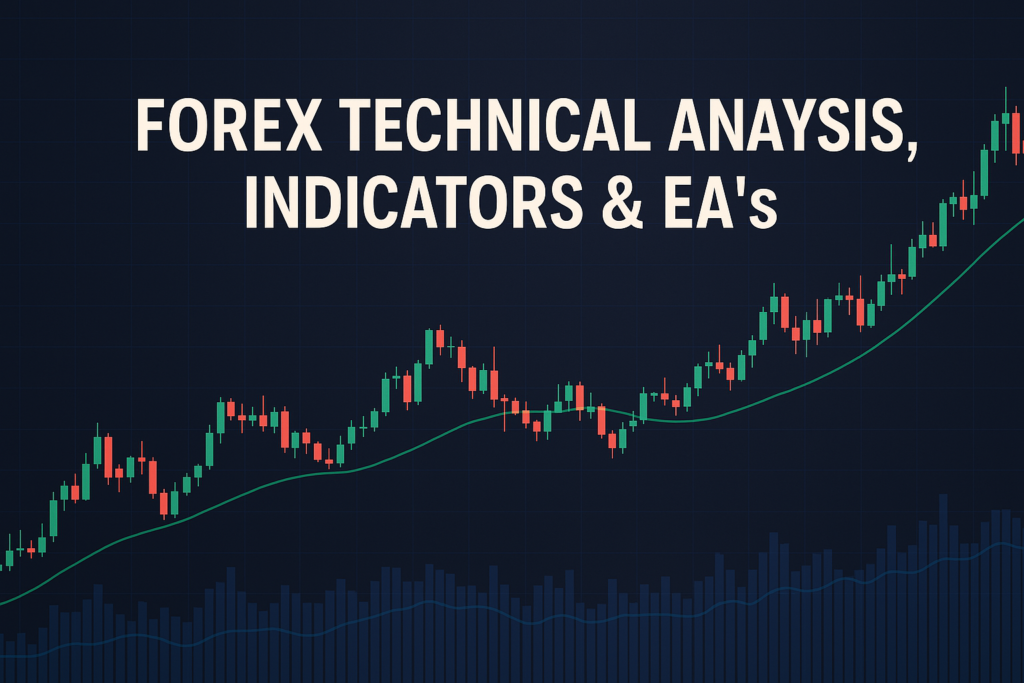
Discover the power of the RSI indicator in forex trading and elevate your trading strategy to new heights.
The RSI indicator in forex trading is like a compass for traders. It helps them understand whether a currency is overbought or oversold. This tool is essential for making informed decisions in the fast-paced world of forex. By using the RSI, traders can identify potential price reversals, giving them a chance to enter or exit trades wisely.
However, both beginners and experienced traders often struggle with the RSI. They may find it challenging to interpret the signals correctly. Sometimes, the RSI can give misleading information, leading to potential losses. Thus, understanding how to use the RSI indicator effectively is crucial for maximizing profit and minimizing risk.
This article will explore the RSI indicator in forex trading, its history, advantages, disadvantages, and practical strategies to apply it efficiently.
For instance, let’s look at the AUDUSD analysis April 17, 2025. This analysis gave traders valuable insights into market movements, demonstrating the importance of the RSI in making informed trading decisions.
What is a RSI Indicator in Forex Trading?
The RSI indicator, or Relative Strength Index, is a tool that helps traders gauge the strength of a currency pair. Imagine you are trying to find out if a currency is too expensive or too cheap. The RSI does just that. It ranges from 0 to 100, where values above 70 suggest overbought conditions, and values below 30 indicate oversold conditions. It’s like a simple meter that tells you if a currency is ready for a change.
Types of RSI Indicator in Forex Trading
There are different types of RSI indicators used in forex trading, including:
- Simple RSI: This is the standard version and the most commonly used.
- Exponential RSI: This version gives more weight to recent prices, making it more responsive.
- Weighted RSI: Similar to the exponential version, but uses a different calculation method.
How RSI Indicator in Forex Trading Smooths Out Price Action
The RSI helps to filter out the noise in price movements. Imagine you are in a noisy room trying to hear someone speak. The RSI acts like a filter, allowing you to focus on the important signals. By smoothing out the price action, the RSI gives a clearer picture of market trends and potential reversals.
Common Periods Used and Why
Traders commonly use 14 periods for the RSI calculation. This means they look back at the last 14 days (or any other time frame) to assess the strength of price movements. This period is popular because it balances sensitivity and reliability. However, some traders may adjust the period based on their strategy or market conditions.
The History of RSI Indicator in Forex Trading: How It Became Popular
Origin of RSI Indicator in Forex Trading
The RSI was created by J. Welles Wilder Jr. in 1978. He developed it to help traders measure price momentum. His goal was to create a simple yet effective tool to improve trading decisions. The RSI quickly gained popularity because it provided a clear and easy way to assess market conditions.
When Did Traders Start Using It Widely?
In the late 1980s and 1990s, traders began to adopt the RSI indicator widely. As more traders discovered its effectiveness, it became a staple in many trading strategies. Today, it is used by traders all over the world, from beginners to professionals.
Real-Life Stories
Many professional traders have shared stories of how the RSI helped them make significant profits. For example, one trader used the RSI indicator to identify a major reversal in a currency pair, allowing him to enter a trade at the right moment. This led to a substantial profit, showcasing the power of the RSI in forex trading.
Advantages and Disadvantages of RSI Indicator in Forex Trading
Advantages:
The RSI indicator in forex trading offers several benefits:
- Helps Identify Trends Easily: The RSI can quickly show whether a market is trending up or down.
- Useful for Dynamic Support and Resistance: Traders can use the RSI to identify potential reversal points.
- Works Well for Crossover Strategies: The RSI can signal buy or sell opportunities when it crosses certain levels.
Disadvantages:
However, the RSI is not perfect. It has its drawbacks:
- lags Behind Price Movements: The RSI may not react quickly enough to sudden market changes, leading to missed opportunities.
- Can Give False Signals in Sideways Markets: In choppy markets, the RSI can produce misleading signals, causing confusion for traders.
How to Apply RSI Indicator in Forex Trading on MT4 & MT5
Step-by-Step Guide to Adding RSI Indicator in Forex Trading on Charts
Adding the RSI indicator to your charts on MT4 or MT5 is straightforward. First, open your trading platform and select the chart you want. Then, go to the “Insert” menu, choose “Indicators,” and click on “Oscillators.” From there, select “Relative Strength Index,” and voila! The RSI is now on your chart.
Customizing RSI Indicator in Forex Trading Settings
You can customize the RSI settings to fit your trading style. Change the period to suit your analysis, adjust the colors for better visibility, or choose between simple, exponential, or weighted types. Customization helps make the RSI more effective for your strategy.
Saving Templates for Easy Application
Once you have customized the RSI settings, you can save them as a template. This allows you to apply the same settings to other charts quickly. Just right-click on the chart, select “Template,” and save your customized RSI settings. Next time, you can easily load it with just a click!
5 to 7 Trading Strategies Using Only RSI Indicator in Forex Trading
1. All Time Frame Strategy (M5 to D1)
This strategy works across different time frames. When the RSI drops below 30, consider buying. If it rises above 70, think about selling. For example, if you see the RSI at 25 on a 1-hour chart, it might be time to buy.
2. Trending Strategies
In trending markets, use RSI levels to confirm the direction. If the trend is upward, look for buy signals when the RSI dips below 30. Conversely, in a downward trend, sell when the RSI exceeds 70. This helps to ride the trend while minimizing risks.
3. Counter Trade Strategies
Counter trading can be risky yet rewarding. If the RSI shows overbought conditions (above 70), consider selling. If it indicates oversold conditions (below 30), think of buying. For instance, if the RSI is at 75, and you see a reversal pattern, it could be time to sell.
4. Swing Trades Strategies
For swing trading, look for RSI divergences. If prices are rising but the RSI is falling, it signals a potential reversal. This could be your cue to enter a trade. For example, if the price hits new highs, but the RSI doesn’t, it might be time to sell.
5 to 7 Trading Strategies Combining RSI Indicator in Forex Trading with Other Indicators
1. RSI and Moving Averages
Combine the RSI with moving averages for stronger signals. When the RSI dips below 30 and the price is above the moving average, consider buying. This strategy can help confirm the strength of the trade.
2. RSI with MACD
The MACD can enhance the RSI signals. If the RSI crosses below 30 while the MACD line crosses above the signal line, it’s a strong buy signal. For example, if both indicators align, it could lead to a profitable trade.
3. RSI with Bollinger Bands
Use Bollinger Bands alongside the RSI. If the price touches the lower band and the RSI is below 30, it’s a potential buy opportunity. Conversely, if it touches the upper band and the RSI is above 70, consider selling.
4. RSI and Fibonacci Levels
Fibonacci retracement levels can work well with the RSI. If the price retraces to a Fibonacci level and the RSI is oversold, it may be a good buying opportunity. For instance, if the price hits the 61.8% level and the RSI is below 30, it’s worth a look.
5. RSI with Trend Lines
Using trend lines with the RSI can help identify breakouts. If the RSI shows overbought conditions while the price breaks a trend line, it might signal a reversal. For example, if the price breaks a rising trend line while the RSI is at 75, consider selling.
If you ever encounter issues like a Chart Price Mismatch, troubleshooting is vital for maintaining accurate trading decisions.
Top 10 FAQs About RSI Indicator in Forex Trading
1. What does RSI stand for?
RSI stands for Relative Strength Index. It is a momentum oscillator used to measure the speed and change of price movements.
2. How do I read the RSI?
The RSI ranges from 0 to 100. Readings above 70 indicate overbought conditions, while readings below 30 suggest oversold conditions.
3. Is RSI a leading or lagging indicator?
RSI is considered a lagging indicator because it is based on past price movements. It can, however, provide valuable insights into future price movements.
4. Can I use the RSI for day trading?
Yes, many day traders use the RSI to identify short-term trading opportunities, especially in volatile markets.
5. What time frame is best for using the RSI?
The best time frame depends on your trading style. Day traders might use shorter time frames like M5 or M15, while swing traders might prefer H1 or H4.
6. How do I set up the RSI on my trading platform?
You can set up the RSI by going to the indicators section of your trading platform and selecting the Relative Strength Index from the list.
7. Can RSI be used alone?
While the RSI can be effective alone, combining it with other indicators can enhance its reliability and provide clearer signals.
8. What are common mistakes when using the RSI?
Common mistakes include not considering market conditions or relying solely on RSI signals without confirmation from other indicators.
9. How often should I check the RSI?
Monitor the RSI regularly, especially if you are actively trading. Checking it multiple times a day can help you stay informed of market changes.
10. Can RSI predict market reversals?
While the RSI can indicate potential reversals, it should not be the only factor in your decision-making process. Always consider other indicators and market trends.
Conclusion
The RSI indicator in forex trading is a powerful tool that can help traders identify market conditions and potential reversals. Understanding how it works and how to apply it effectively can make a significant difference in your trading success.
As you explore different strategies, remember to test them on a demo account before risking real money. Practice will build your confidence and improve your skills. Happy trading!
Stay ahead of the game by reading expert-backed advice on this topic Trading Economics, Yahoo Finance
Expand Your Knowledge
- 📌 Forex Trading Learning Road Map
- 📌 Forex Trading Course with no Fees
- 📌 Forex Trading Issues, Problems, and Solutions
- 📌 Forex Daily Forecast & Live Updates
- 📌 Forex Fundamental & News Analysis: Tomorrow’s Market Movers & Trade Opportunities
- 📌 Forex Education Hub: Learn & Profit
- 📌 Forex Technical Analysis, Indicators & EA’s
Start Trading Today
Ready to take your forex trading to the next level? Open an account with Exness, one of the most trusted platforms in the industry. 👉 Sign Up Now and trade with confidence!
My recommended broker stands out with ultra-low spreads for beginners, instant withdrawals, and zero spread accounts for pro traders.
Trusted since 2008, lightning-fast execution, no hidden fees, and a secure, transparent trading environment—giving you the edge you need to succeed. 🚀
YouTube Video Library: Related Videos
Note: The video above is embedded from YouTube and is the property of its original creator. We do not own or take responsibility for the content or opinions expressed in the video.



